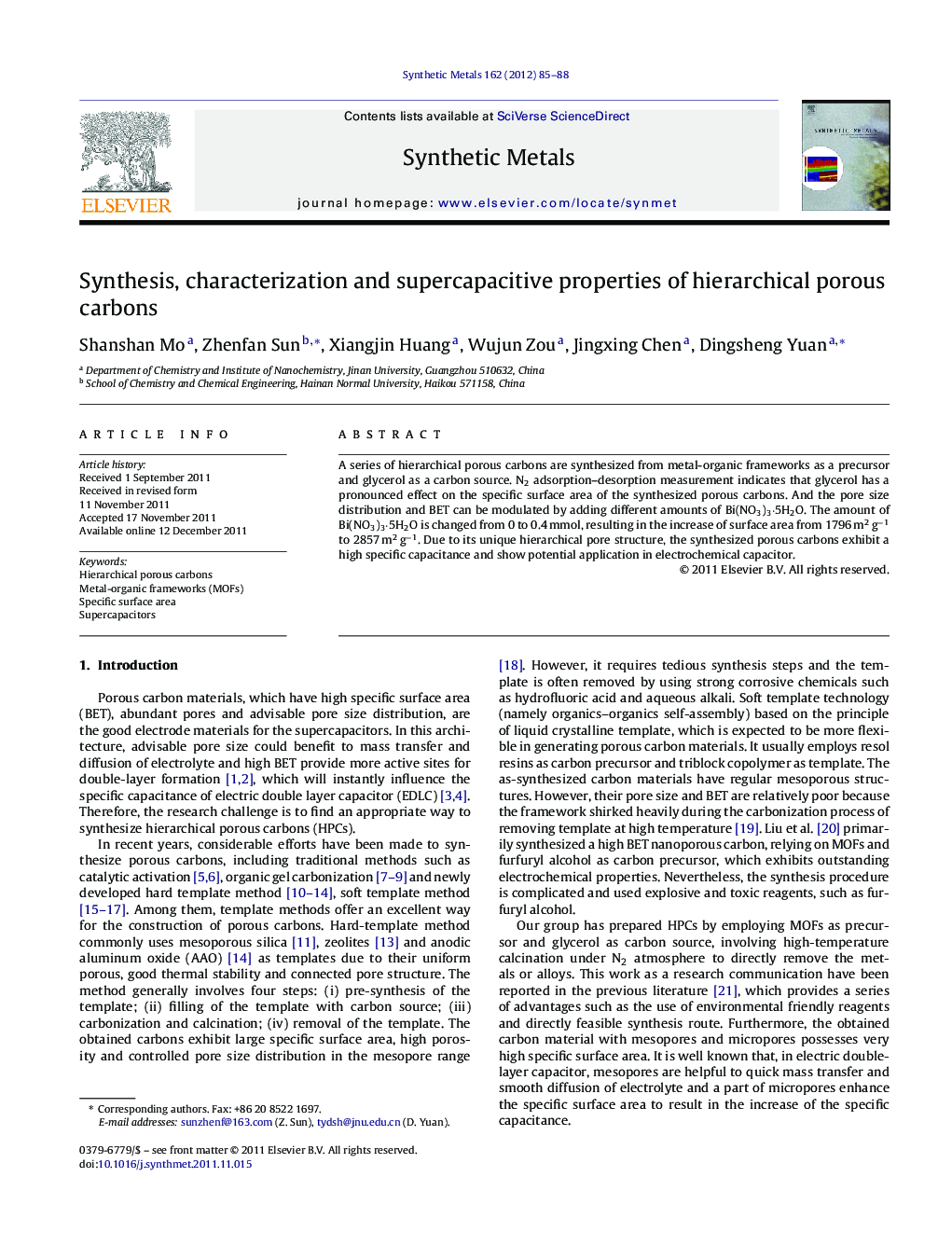| Article ID | Journal | Published Year | Pages | File Type |
|---|---|---|---|---|
| 1442154 | Synthetic Metals | 2012 | 4 Pages |
A series of hierarchical porous carbons are synthesized from metal-organic frameworks as a precursor and glycerol as a carbon source. N2 adsorption–desorption measurement indicates that glycerol has a pronounced effect on the specific surface area of the synthesized porous carbons. And the pore size distribution and BET can be modulated by adding different amounts of Bi(NO3)3·5H2O. The amount of Bi(NO3)3·5H2O is changed from 0 to 0.4 mmol, resulting in the increase of surface area from 1796 m2 g−1 to 2857 m2 g−1. Due to its unique hierarchical pore structure, the synthesized porous carbons exhibit a high specific capacitance and show potential application in electrochemical capacitor.
► Hierarchical porous carbons have been synthesized via direct carbonization of MOFs. ► The synthesis process is free for the removal of template. ► BET surface area of HPCs corresponds to the amount of Bi(NO3)3 and glycerol volume. ► The hierarchical porous carbons exhibit a high specific capacitance.
